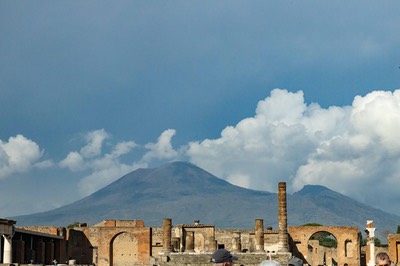
As we were leaving port our excursion guide showed excavations of some Roman ruins. They were building a new metro station and found ruins. For many years they have been uncovering them and among other antiquities they found 2 Roman warships. Naples lives in the shadow of Mt. Vesuvius an is considered the second most dangerous volcano in the world. That is due to the 2.5 million people who live near it. Scientists predict that the next eruption will be explosive and catastrophic. There are “evacuation plans” which our guide portrayed as ridiculous. I don’t know how much warning they will get but when they do get warning it will be chaos.
We learned a new phrase for a bad driver. Our guide called them “tomato heads.” I like it.
Our first stop was a cameo shop where they make them and sell them. The picture below is a craftsman working on one. The base material is sea shell. The process is very labor intensive and as a result is a dying art.

Our major stop of the day was Pompeii, an ancient city totally destroyed by a Mt. Vesuvius eruption in 79 CE. The city was very old (9th century BCE) It was originally Greek and then became Roman. Roman Pompeii was an important trading and political city. The city was covered with 13-20 feet of ash and pumice freezing in a moment the life in the city. It is a very large ruin best shown in pictures.
A view of the city wall from outside. You get an idea of how large the city was.
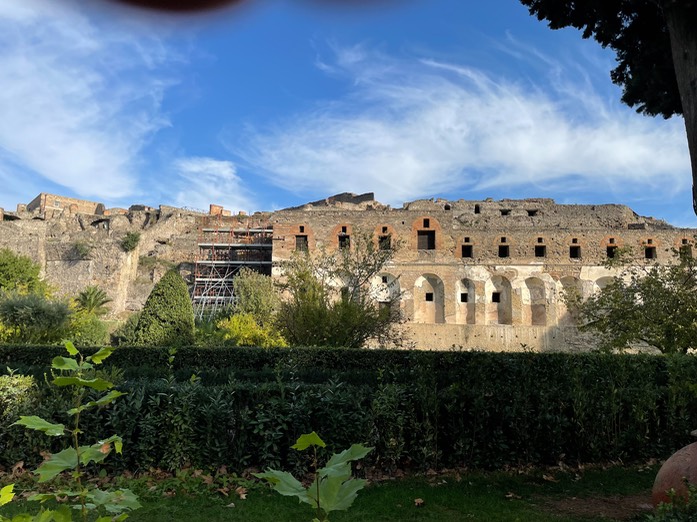
Pompeii had two amphitheater—a small one with a roof and a large one that was uncovered.
the small amphitheater.

A panorama of the large amphitheater. Our guide, Marco, is holding the red umbrella on the left. He often repeated, “Marco, you talk too much.” He may have been right. As we walked around the information came so fast it was impossible to remember it all. However, he was born in Pompeii and was very knowledgeable about the site.

The streets were interesting. The picture on the left shows on of the major streets. The one on the right show Marco on stepping stones across the street. The stones were set for that chariots could drive through the gaps. The curbs were deep because the street served as the sewer. The stepping stones were so you could cross the street without walking through the sewage. Can you imagine what the smell was like.
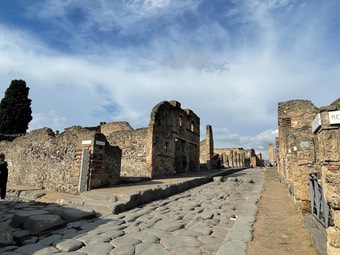
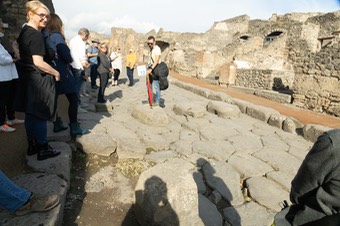
There was ample evidence of art in the city. The picture on the left is a fresco. Skeletons were also discovered, and some carbonized bodies were found. The picture on the right shows one of those bodies.
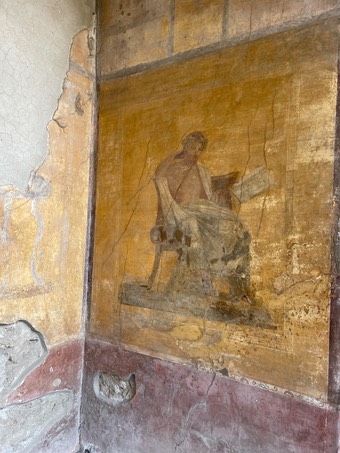
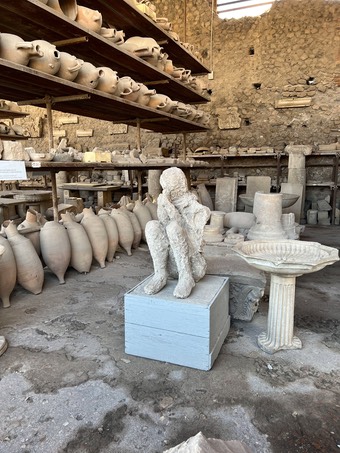
There is so much to tell and so many pictures. It was a fascinating tour.
